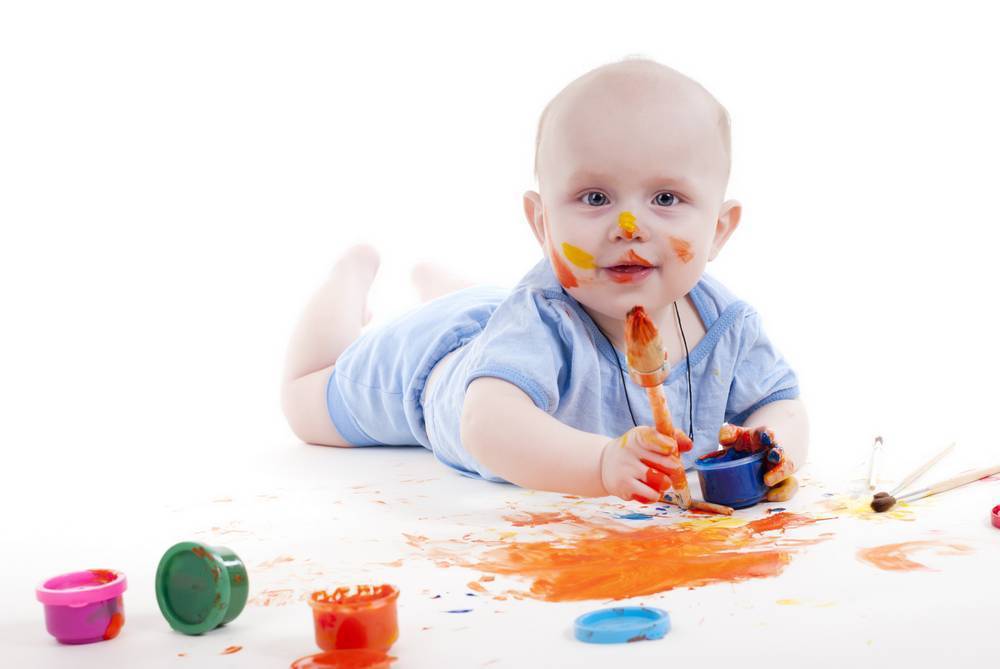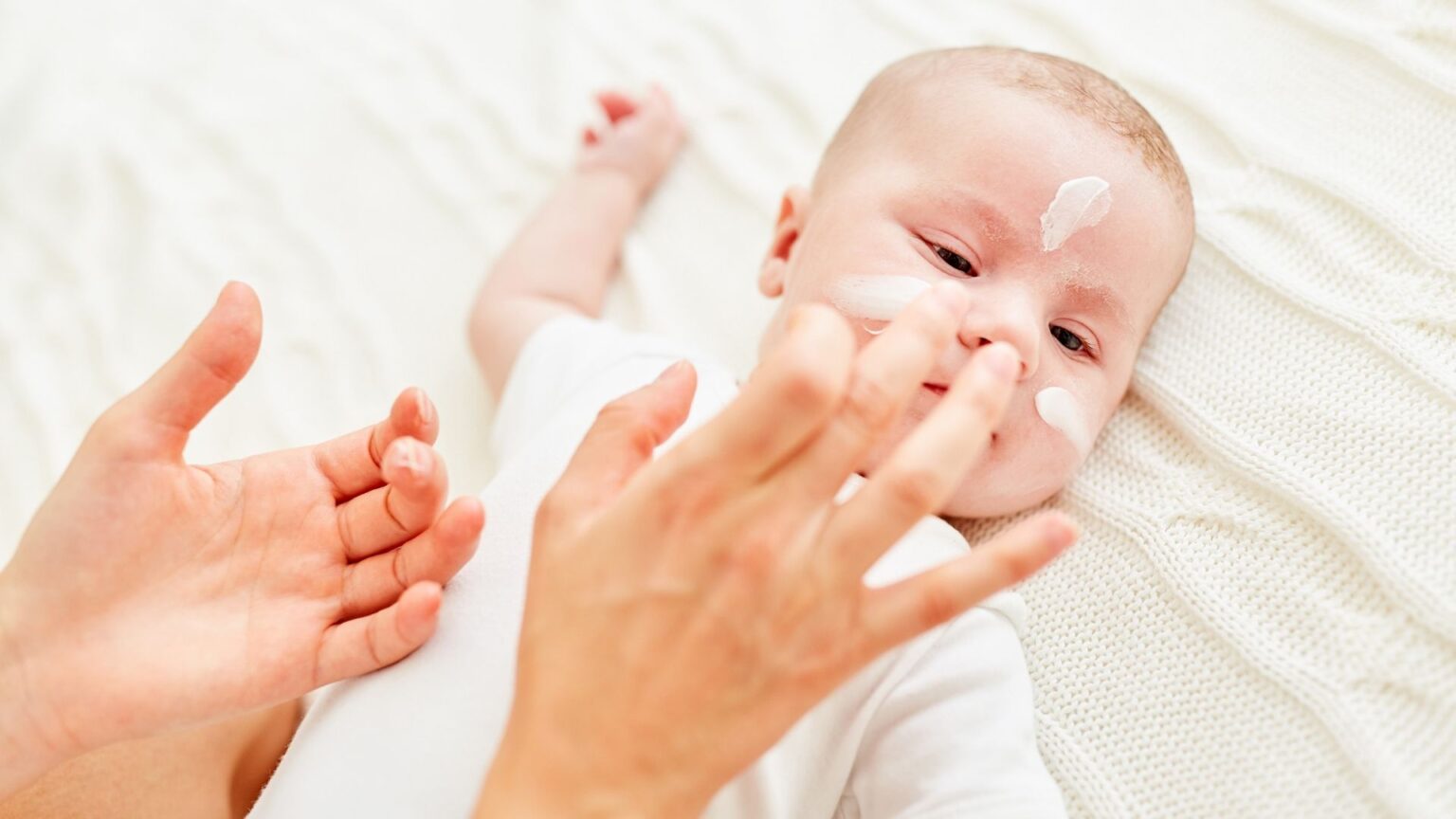Is Acrylic Paint Safe For Baby Skin

Introduction
Is Acrylic Paint Safe For Baby Skin: One primary concern regarding the use of acrylic paint on baby skin is the presence of potentially harmful chemicals and toxins. Many acrylic paints contain additives such as preservatives, stabilizers, and pigments that may pose risks upon direct contact with the skin, especially the sensitive skin of infants. Certain pigments used in acrylic paints, such as cadmium, cobalt, and chromium compounds, have raised particular concerns due to their toxicity levels.
A common allergen known to cause skin irritation and allergic reactions in susceptible individuals. Babies, with their developing immune systems and thinner skin barrier, may be more vulnerable to adverse reactions when exposed to such allergens.
Despite these concerns, manufacturers have made efforts to produce acrylic paints labeled as “non-toxic” or “safe for children.” These paints are formulated to adhere to stringent safety standards, ensuring that they are free from harmful substances and suitable for use by individuals of all ages, including babies. However, it is essential to exercise caution and carefully read product labels to verify their safety credentials before use.

Can I use acrylic paint for baby handprints?
However, acrylic paint can be used to make handprints on t-shirts, potholders, towels, and so on. Just add a drop of water to the paint (and cover your work area!). This helps the print look nicer on fabric, etc. You can usually find them at craft stores as well as stores like Wal-mart and Target.
- Select non-toxic acrylic paints labeled as safe for children.
- Conduct a patch test on a small area of the baby’s skin to check for any adverse reactions before proceeding.
- Use a soft-bristled brush or sponge applicator to apply paint thinly and evenly onto the baby’s hand.
- Work swiftly but gently to capture the handprint impression before the paint dries.
- Supervise the baby closely throughout the process to prevent accidental ingestion or contact with the eyes.
What paint can I use on baby skin?
Rather than solvent-based or oil-based paints, choose water-based paints. Water-based (also called latex or acrylic) paints use water as the liquid, and they release fewer chemicals as they dry.
Water-based tempera paint is a popular choice for baby skin due to its non-toxic formulation and ease of washability. Made with natural pigments and binders, water-based tempera paint is gentle on sensitive skin and dries quickly, reducing the risk of smudging or smearing. Additionally, it offers vibrant colors and is readily available in child-friendly packaging, making it an ideal option for various artistic endeavors with babies.
For caregivers seeking natural alternatives, plant-based paints offer a safe and eco-friendly option for baby skin. These paints are made from organic ingredients such as fruits, vegetables, and plant extracts, making them free from harmful chemicals and additives. While natural plant-based paints may have a shorter shelf life compared to synthetic counterparts, they provide peace of mind for caregivers concerned about exposing their babies to potentially toxic substances.
Specifically formulated for use on baby skin, baby-safe finger paints are designed with non-toxic ingredients and gentle formulas. These paints are often hypoallergenic and free from common allergens such as latex and harsh chemicals, making them suitable for even the most sensitive skin types. Additionally, baby-safe finger paints come in bright, attractive colors and are washable, allowing for easy cleanup after artistic activities.
Are acrylic paints safe for skin?
Are acrylic paints safe to paint your body? The simple and quick answer is NO. Acrylics, tempera, oil paints, spray paint, house paint, watercolors, etc., are not designed to be used on the body and hence are not safe.
Limit Exposure and Duration: Avoid prolonged or extensive contact with acrylic paints on skin. Use them for temporary designs or artistic purposes rather than as long-term body paint.
Monitor for Adverse Reactions: Keep a close eye on the skin for any signs of irritation, allergic reactions, or discomfort. If any adverse reactions occur, immediately discontinue use and seek medical advice if necessary.
Proper Removal: Thoroughly cleanse the skin with mild soap and water to remove acrylic paint after use. Avoid using harsh chemicals or solvents, as they may exacerbate skin irritation or dryness.
What age can kids use acrylic paint?
Even though acrylic paint is safer than oil, the pigments can contain toxic substances like cadmium, zinc or lead. Even adults need to be careful when they handle it, so it’s definitely not a good idea to let a 2 year old to play with it.
Additionally, cognitive development plays a crucial role in a child’s readiness to use acrylic paint. As children grow and develop, they gain a better understanding of cause and effect, color recognition, and spatial awareness, which are essential skills for engaging in painting activities. Caregivers can gauge a child’s readiness to use acrylic paint by observing their interest in art, their ability to follow simple instructions, and their willingness to engage in creative activities.
Regardless of age, children should always be supervised when using acrylic paint to ensure their safety and well-being. Younger children, especially toddlers and preschoolers, may require more hands-on guidance and assistance from caregivers to navigate the painting process safely. Supervision involves not only monitoring the child’s actions but also providing guidance on proper paint application techniques, handling of art tools, and adherence to safety precautions.
Caregivers can create a supportive and enriching painting environment by setting up a designated art space with appropriate materials, covering surfaces with protective layers, and establishing clear guidelines for behavior and cleanup. By actively engaging with children during painting activities, caregivers can foster creativity, encourage exploration, and ensure a positive experience for young artists.

What paint can I use for baby handprints?
ABEIER Washable Finger Paint for Toddlers, Safe Non-Toxic, 12 Vibrant Colors (1.21fl oz), Baby Safe Paint for Hand and Feet, Mess Free Art Supplies for Kids, Preschool Learning Gifts, Ages 1-3 4 5 6+
- Choose paints labeled as “non-toxic,” “safe for children,” or “baby-safe” to ensure they meet stringent safety standards.
- Conduct a patch test on a small area of the baby’s skin to check for any adverse reactions before proceeding with handprint activities.
- Use soft-bristled brushes, sponges, or finger painting techniques suitable for baby skin to apply paint thinly and evenly onto the hand.
- Supervise the baby closely throughout the handprint process to prevent accidental ingestion or contact with the eyes.
- Wash hands and clean up any spills or mess promptly after handprint activities to maintain a clean and safe environment.
What is the best material for baby handprint?
Canvas is usually made of cotton or linen and is a simple, easily-accessible fabric to use when capturing your baby’s handprint. Canvas is easy to frame and is available in a wide variety of shapes and styles. Canvas will work well with a variety of materials, including ink pads, paint, markers, crayons, or pens.
Baby-safe ink pads offer a convenient and mess-free option for capturing baby handprints. These ink pads are formulated with non-toxic, washable ink that is safe for baby skin, making them ideal for creating handprint keepsakes without the need for additional materials or cleanup. Caregivers can simply press the baby’s hand onto the ink pad and then onto paper or another surface to create a handprint. Baby-safe ink pads are available in a variety of colors and are suitable for use with newborns and older babies.
Water-based tempera paint is another popular choice for creating baby handprints, offering vibrant colors and easy washability. Caregivers can apply paint thinly and evenly onto the baby’s hand using a soft-bristled brush or sponge applicator, then press the hand onto paper or another surface to create a handprint. Water-based tempera paint is non-toxic and safe for baby skin, making it suitable for use with infants and toddlers. Additionally, it dries quickly, reducing the risk of smudging or smearing.
Silicone molds provide a simple and mess-free option for creating baby handprints, particularly for caregivers who prefer not to use clay or paint. These molds are designed to capture the shape and texture of the baby’s hand, allowing caregivers to pour in a variety of materials such as plaster, resin, or wax to create a three-dimensional handprint. Silicone molds are durable, reusable, and easy to clean, making them a convenient choice for creating lasting handprint keepsakes.
What acrylic paint is safe for babies?
Child & Baby Safe Paint
- Helmi 10. Matt.
- Helmi 30. Semi Matt.
- Kiva 10. Matt.
- Helmi Primer. Matt.
- Helmi 80. Hard-wearing, water-based, acrylic paint for interior wood and furniture in a gloss finish (80%)
- Kiva 30. Semi Matt.
- Kiva 70. Translucent, gloss lacquer that offers a natural finish to interior wooden surfaces.
Crayola Washable Kids’ Paint is a popular choice for caregivers due to its non-toxic formulation and washable properties. These paints come in a variety of bright colors and are specially formulated for children’s use, making them safe for babies as well. Crayola Washable Kids’ Paint is easy to clean up with soap and water, making it ideal for messy artistic activities with little ones.
Arteza Kids Tempera Paint is another safe option for babies, offering non-toxic, water-based acrylic paints in vibrant colors. These paints are ASTM D-4236 compliant and suitable for children of all ages, including babies. Arteza Kids Tempera Paint is washable and easy to clean, making it a convenient choice for caregivers.
Sargent Art Acrylic Paint is a non-toxic, water-based acrylic paint that is safe for use with babies. These paints come in a variety of colors and are ASTM D-4236 compliant, ensuring their safety for children. Sargent Art Acrylic Paint is washable and easy to clean up, making it suitable for messy artistic activities with babies.
Is it safe to use acrylic paint on kids hands?
Finger painting with acrylic paint is not harmful (as long as you wash your hands afterwards), but putting it on your face is not recommended.
Toxicity: Acrylic paints may contain pigments, binders, and additives that could pose risks if ingested or absorbed through the skin. Certain pigments, such as cadmium, cobalt, and chromium compounds, are known to be toxic and may cause adverse health effects if children come into direct contact with them.
Allergens: Some acrylic paints contain latex, a common allergen that can cause skin irritation or allergic reactions in sensitive individuals. Children with latex allergies may experience discomfort or adverse reactions when exposed to acrylic paint containing latex.
Skin Sensitivity: Children’s skin is more sensitive and delicate than adults’, making them more susceptible to irritation or allergic reactions when exposed to certain substances. Caregivers must be mindful of children’s skin sensitivities and choose paint products accordingly.

Conclusion
The presence of potentially harmful chemicals and allergens, such as certain pigments and latex. Despite these concerns, many manufacturers offer acrylic paints labeled as “non-toxic” or “safe for children,” adhering to stringent safety standards to minimize risks.
However, it is essential for parents and caregivers to exercise caution and conduct thorough research when selecting acrylic paints for use with babies. Reading product labels, verifying safety certifications, and considering alternative, natural-based paints are prudent steps to mitigate potential risks.
Moreover, the manner in which acrylic paint is applied and the supervision of babies during artistic activities play crucial roles in ensuring their safety. Careful attention to application methods, avoiding direct contact with sensitive areas, and preventing ingestion of paint are essential precautions to minimize risks.
